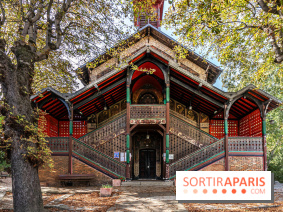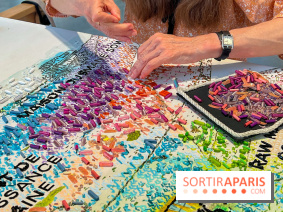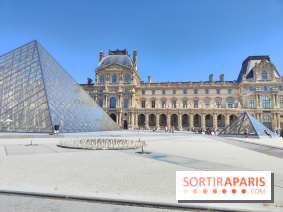Among Paris's beautiful equestrian statues, that of Joan of Arc, which runs along the rue de Rivoli, more precisely Place des Pyramides, holds a place of choice. It has to be said that this emblematic work is steeped in history. This monument to our national heroine is much more than a simple creation, it contains a strange story that made headlines in its day.
Following the Franco-Prussian War of 1870, France, seeking to rebuild itself and its image, decided to erect a statue in honor of Joan of Arc, a symbol of courage and national unity. Emmanuel Frémiet, a renowned sculptor of the time, was chosen for this important task.
The statue was erected on February 20 , 1874 and unveiled the same year, resting on a pedestal designed by architect Paul Abadie and surrounded by a protective grille designed by Gabriel Davioud. The bronze work was produced by the Thiébaut Frères foundry. The initial reception to this creation was mixed, with criticism levelled at the imposing - albeit realistic - dimensions of the horse, which seemed to overshadow the delicate female figure riding it. Despite this, in an article in Le Temps dated June 16, 1889, when Frémiet unveiled a revised version of the statue, art critic Paul Mantz praised the originality and value of the first version in the Place des Pyramides, praising the striking contrast between Joan of Arc's youthfulness and her sturdy mount. He asserted that, despite initial reservations, the statue had finally won the admiration of connoisseurs, who saw no reason to modify it.
Mounted on her spirited horse, Joan of Arc in battle dress, proudly brandishes her flag, as if to proclaim "Nothing is lost yet"! It's precisely this conviction that the Vosges-based industrialist wants to communicate.
No sooner had the statue been erected than it became the target of much criticism. Joan was criticized for being too slight, and the horse for being disproportionate, though realistic. Affected by these harsh criticisms, the proud artist, who was secretly making a replica of his Joan on horseback for Nancy, created a new version. This version was completed in 1889 and presented in marble at the Salon des Champs-Elysées. On June 28, 1890, the anniversary of the coronation of Charles VII, the Nancy statue was unveiled with great fanfare.
At his own expense, Emmanuel Frémiet recast his creation as a new Jeanne. The challenge remains to replace the one on the Place des Pyramides... The solution emerged unexpectedly, thanks to the Paris Prefecture of Police, who informed Frémiet of the damage caused by the metro works. The sculptor seized the opportunity to exchange the statue in secret. On May 16, 1899, at the crack of dawn, he discreetly replaced the old version with the new one, which he gilded to enhance the patina.
Crowned with laurels, symbolizing victory, she proudly holds her standard, dressed in her armor, her sword in its scabbard evoking the peril threatening the nation, and wearing spurs, the mark of her membership of chivalry. On her faithful steed, described by La Trémouille as black, she heads for Reims for the coronation of Charles VII. The horse is depicted in full trot, with synchronized movement of the limbs. Jeanne's upright, inflexible posture, proud gaze and impassive face show her in action. Her mission remains unfinished until Charles VII is crowned, in accordance with the injunction of her heavenly voices.
This surprising account of the statue exchanged in secret enriches our understanding of Parisian history, and invites us to take a fresh look at the monuments that line our surroundings. As we stroll through the streets of Paris, we are invited to rediscover the city, not only through its landscapes and architecture, but also through the stories and mysteries that animate its statues and emblematic squares.
later, replicas of this statue, in various sizes, were erected in several French cities, such as Lille (1913, in unweathered bronze), Saint-Étienne (1916, in unweathered bronze) and Compiègne (1960, in unweathered bronze). Joan of Arc also gained international recognition, with a statue of her in Portland. The latter, an exact replica in gilded bronze inaugurated in 1925, was made from the original molds of the Paris statue and shipped to the United States as a tribute to the "doughboys", the American soldiers who fell in the First World War.
Sources : Wikipedia
Location
Place des Pyramides
Place des Pyramides
75001 Paris 1
Prices
Free
Recommended age
For all



















